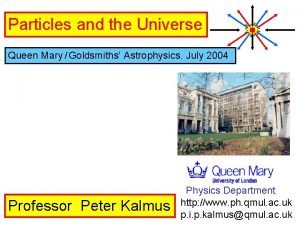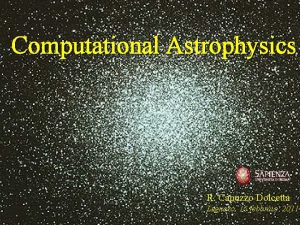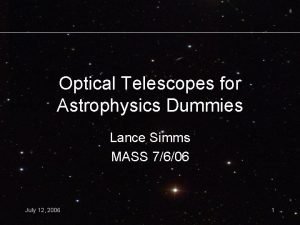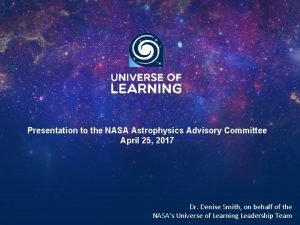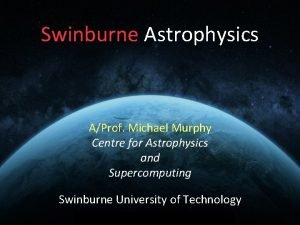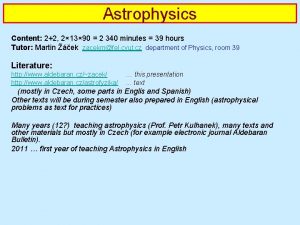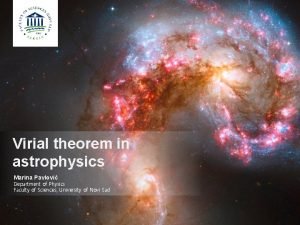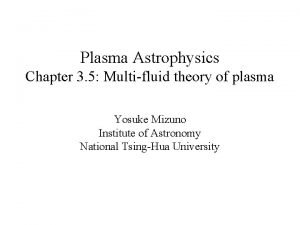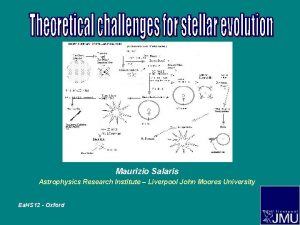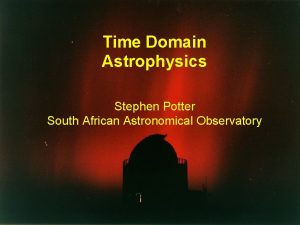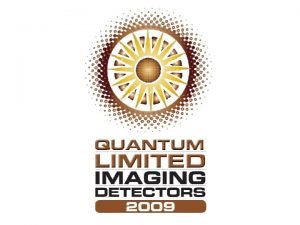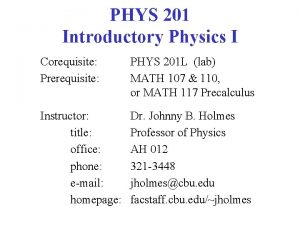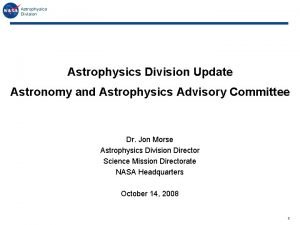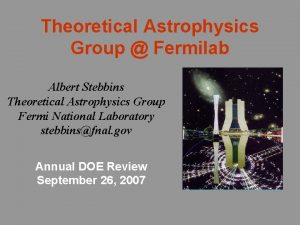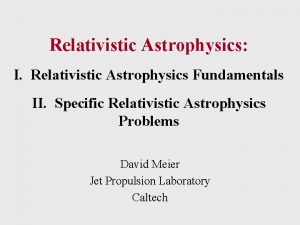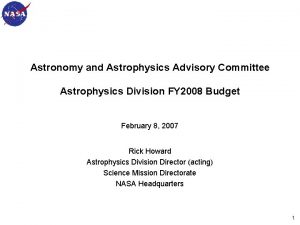Phys 150 Astrophysics Prerequisite Phys 4 C Read










- Slides: 10

Phys 150 Astrophysics: Prerequisite: Phys 4 C • Read Chapters 1 and 2 of Essential Astrophysics by Kenneth Lang by Wednesday, 2/03. • Kennel Bookstore has fouled up my order of this book, but you can either purchase or rent it quicker and cheaper from Amazon, either in print or electronically. • There will be no observing (officially) this semester. This is a theory course, and spring is the bad-weather semester in Fresno. • Astrophysics is a historical science. The particular values of the numbers you get matter, more than in other fields (for example, mathematical physics). The Universe is often messy and complicated. For example, star formation can be triggered by at least three different physical mechanisms , unlike with the unique, simple, linear causes we assume in many physics courses. The idealizations often used in physics (such as frictionless surfaces, massless strings, and neglecting air resistance) may not work, because nature is often not smooth and laminar (as in Phys 4 A), but rough, irregular, and turbulent.

What is astrophysics, and how is it different from astronomy? Astronomy = measuring and understanding the positions and motions of stars, planets, etc. Astronomy is the oldest of the sciences, practiced in Babylon in ~3500 B. C. E. (about the time writing was invented, about 1000 years before the Egyptians built their pyramids), although the Chinese may have been doing astronomy in ~6000 B. C. E. Astrophysics = Astronomy + Physics Astronomy and astrophysics were distinctive in the 1890 s, when astrophysics began with the study of spectra. Now, the fields are so thoroughly intermixed, it makes no sense to distinguish them. This is good: science is supposed to make progress. (For example, if you are taking spectra to track the motion of gas going down a black hole, are you doing astronomy or astrophysics? You’re measuring positions and motions, but you’re using spectra to do it, and the reason why you’re doing it is probably that you want to understand black hole physics. )

I will NOT be using Canvas in Phys 150. I do all my own web programming, since it’s much more reliable and accessible. Aside from the required textbook (Essential Astrophysics by Kenneth Lang), all other class material will be posted to the Phys 150 homepage, here: http: //zimmer. csufresno. edu/~fringwal/phys 150. html These will include Power. Points, handouts, and links to videos I want students to watch. Newer material will appear at the bottom of this webpage. I will email reminders to students whenever I post anything.

Grading in Phys 150 will be: 25% Mid-Term Exam 1 (take-home, due by email to me by 11: 59 p. m. on 3/03: I will email the questions to you on 3/01). 25% Mid-Term Exam 2 (take-home, due by email to me by 11: 59 p. m. on 4/21: I will email the questions to you on 4/19). 50% Final Exam (take-home, due by email to me by 11: 59 p. m. on 5/12: I will email the questions to you on 5/10). Sorry, but because of the COVID-19 pandemic, I will be unable to collect homework, but then take-home exams are glorified problem sets anyway. 85. 0 -100% = A; 70. 0 -84. 9% = B; 55. 0 -69. 9% = C; 40. 0 -54. 9% = D; 0 -39. 9% = F.

Today’s handouts (see the Phys 150 homepage): • The Phys 150 Course Syllabus (now most of the top of the Phys 150 homepage) • A link to the video, “Powers of Ten. ” Please watch this video as soon as possible! • Handouts: (1) “So You Want to be a Professional Astronomer, ” by Duncan Forbes (2) “Advice to the Young Astronomer, ” by Ed Nather (3) “Advice to new astronomers: on your career, ” by Alan Whiting (4) What Good is Astronomy? (various authors) (5) Fermi Questions—Order of Magnitude (6) Units in astrophysics


These are ground-based telescopes.

Hubble Space Telescope is a space telescope: above Earth’s atmosphere, and its obscuring effects. It’s not a space probe, that flies to other planets: we have those, too. Hubble was launched by a Space Shuttle in 1990.


